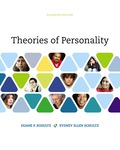
To discuss:
The criticism of behaviorism and psychoanalysis by a humanistic psychologist.
Introduction:
Abraham Maslow is believed to be the spiritual leader and founder of the humanistic psychology movement. He objected to psychoanalysis and behaviorism, especially Freud’s approach to personality. Maslow used to believe that behaviorism has the potential to solve all the problems of the world. His training in experimental psychology involved work on sexual behavior and dominance in primates. That was a huge step indeed, from that type of research in the behaviorist framework to coming up with the ideas of humanistic psychology—right from monkeys to self-actualization.
Explanation of Solution
According to Maslow, when psychologists study solely emotionally and abnormal disturbed instances of humanity, they tend to ignore the positive qualities in human such as contentment, peace of mind and happiness. We underestimate human nature, Maslow charged, when we fail to examine the best in people, that is, the most creative, healthy, and mature individuals. Therefore, Maslow decided that his approach to personality would assess society’s outstanding representatives. When you want to determine how fast people can run, he reasoned, you study not the average runner but the fastest runner you can find.
Only in this way is it possible to determine the full range of human potential. His theory came from the research on creative, self-sufficient, independent, fulfilled adults and not from clinical patient’s case histories. He ended up concluding that each person happens to born having the same set of needs that are instinctive and that enable people to develop, grow, and meet their potential.
Want to see more full solutions like this?
Chapter 9 Solutions
EBK THEORIES OF PERSONALITY
- Describe the four characteristics of generalist practice. Select one of the characteristics and provide an example of how you see yourself implementing that characteristic in the field. How will this implementation affect the client? Please cite in text source and list references. This discussion question provides specific content that will assist in preparing for the ASWB licensing exam.arrow_forwardProfessional Development: What does it mean to you to be a social work professional? How does the NASW Code of Ethics relate to how you act as a professional? Please cite in text source and list references.arrow_forwardExplain how social work is different from other helping professions and why, providing at least three examples. Explain how you can partner with other helping professionals throughout your career in the field. Describe the development of social work as a profession. Please cite in text source and list referencesarrow_forward
- Can you give me a summary of these two videos Gandhi: the road to freedom (2009) https://www.youtube.com/watch?v=boPkMCJSYSsarrow_forwardWhat are the 3 key ideas described in the Video: EcoSense for Living, Future Food https://www.pbs.org/video/future-food-rcje6j/arrow_forwardWhat would be a good description of health for an individual today? How does gender, culture and the practice of health infulence your description?arrow_forward
- Write a love poem about someone longing for a sandwich. Make it a sonnet, and give it a tone that straddles a serious love poem and whimsy appropriate for a poem about a sandwich.arrow_forwardI need help finding 16 pop psychology self-help tyoe book on dating& relationshiparrow_forwardCan you make good 12 discussion questions when it comes to attraction to tattoos an to non tatoosarrow_forward
 Ciccarelli: Psychology_5 (5th Edition)PsychologyISBN:9780134477961Author:Saundra K. Ciccarelli, J. Noland WhitePublisher:PEARSON
Ciccarelli: Psychology_5 (5th Edition)PsychologyISBN:9780134477961Author:Saundra K. Ciccarelli, J. Noland WhitePublisher:PEARSON Cognitive PsychologyPsychologyISBN:9781337408271Author:Goldstein, E. Bruce.Publisher:Cengage Learning,
Cognitive PsychologyPsychologyISBN:9781337408271Author:Goldstein, E. Bruce.Publisher:Cengage Learning, Introduction to Psychology: Gateways to Mind and ...PsychologyISBN:9781337565691Author:Dennis Coon, John O. Mitterer, Tanya S. MartiniPublisher:Cengage Learning
Introduction to Psychology: Gateways to Mind and ...PsychologyISBN:9781337565691Author:Dennis Coon, John O. Mitterer, Tanya S. MartiniPublisher:Cengage Learning Psychology in Your Life (Second Edition)PsychologyISBN:9780393265156Author:Sarah Grison, Michael GazzanigaPublisher:W. W. Norton & Company
Psychology in Your Life (Second Edition)PsychologyISBN:9780393265156Author:Sarah Grison, Michael GazzanigaPublisher:W. W. Norton & Company Cognitive Psychology: Connecting Mind, Research a...PsychologyISBN:9781285763880Author:E. Bruce GoldsteinPublisher:Cengage Learning
Cognitive Psychology: Connecting Mind, Research a...PsychologyISBN:9781285763880Author:E. Bruce GoldsteinPublisher:Cengage Learning Theories of Personality (MindTap Course List)PsychologyISBN:9781305652958Author:Duane P. Schultz, Sydney Ellen SchultzPublisher:Cengage Learning
Theories of Personality (MindTap Course List)PsychologyISBN:9781305652958Author:Duane P. Schultz, Sydney Ellen SchultzPublisher:Cengage Learning





